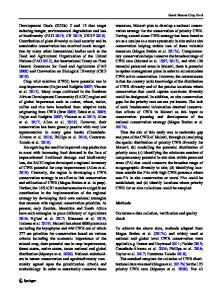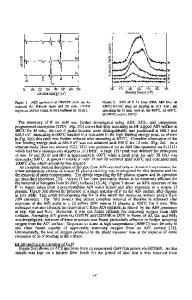In situ and Ex situ Measurements of Stress Evolution in the Cobalt-Silicon System
- PDF / 184,024 Bytes
- 6 Pages / 612 x 792 pts (letter) Page_size
- 85 Downloads / 288 Views
IN SITU AND EX SITU MEASUREMENTS OF STRESS EVOLUTION IN THE COBALT-SILICON SYSTEM G. Lucadamo*, C. Lavoie, C. Cabral Jr., R. A. Carruthers, and J.M.E. Harper *Lehigh University, Dept. of Materials Science and Engineering, Bethlehem, PA 18015 IBM Research Division, Thomas J. Watson Research Center, P.O. Box 218, Yorktown Heights, NY 10598 ABSTRACT The biaxial stress in Co thin-films has been investigated in situ by measuring changes in substrate curvature that occurred during deposition and annealing. Films of Co, 35 to 500 nm in thickness, were deposited by UHV magnetron sputtering at room temperature on Si (100) and poly-Si substrates. Results show that during Co deposition the bending force increased linearly with film thickness; a signature of constant stress. In addition, the stress evolution during silicide formation was measured under constant heating rate conditions from room temperature up to 700 oC. The stress-temperature curve was correlated with Co2Si, CoSi, and CoSi2 phase formation using in situ synchrotron X-ray diffraction measurements. The room temperature stress for the CoSi2 phase was found to be ~0.8 GPa (tensile) in the films deposited on Si (100) and ~1 GPa (tensile) on the films deposited on poly-Si. The higher tensile stress in the poly-Si sample could be a result of Si grain growth during annealing. INTRODUCTION Cobalt silicide has been used to create low leakage junctions in sub-0.25 µm technologies [1]. Unlike Ti-silicide metallurgy, CoSi2 forms easily in small structures as it does not exhibit polymorphism. In addition, CoSi2 also has a slightly lower resistivity and forms at lower temperature than C54-TiSi2. A complete optimization of the Co-salicide process should include an understanding of the stress changes that arise during the reaction. The formation of high stresses during processing could introduce defects, such as dislocations, that would be a hindrance to device operation [2]. The experimental measurement of the intrinsic stress in vapor-deposited polycrystalline and epitaxial thin films has been the subject of many investigations over the past several years. Less common, but of significant technological importance, is the understanding of the stress changes that occur during solid state reactions in thin-film systems. This topic has been the subject of two reviews by d’Heurle [3-4]. For silicides formed under isothermal conditions the stress has been modeled by considering the sum of the instantaneous forces applied to a substrate by the growth of a compound phase minus relaxation during the reaction [5]. Under constant heating rate conditions, extrinsic stress arises from differences in thermal expansion coefficients between the film and substrate, while intrinsic stress changes can develop from the formation of possibly several compounds. This type of measurement can be used to investigate the formation of phases over a range of temperatures, and thus provide important insight into the nature of the stress changes throughout a reaction sequence. During isochronal annealing, C
Data Loading...











